A reliable hole saw kit is a must-have in every professional's toolkit. To make the most out of your hole saws, follow these expert tips to drill faster, cleaner, and safer.
Choosing the Right Tool for Smaller Holes
For holes less than one inch in diameter, consider using a spade, auger, or Forstner bit instead of a hole saw. These alternatives are less likely to catch and twist your arm, and they don’t leave behind a plug to remove—just simple wood shavings. Reserve your hole saw kit for sizes larger than an inch.
Keep Your Hole Saw Clean
Hole saws often cut through pine, spruce, or Douglas fir, which can leave pitch and resin on the teeth. This buildup increases friction, slows down cutting, and generates heat, leading to quick dulling of the teeth. To extend the life of your hole saws, clean off the pitch after each use.
Replace Worn-Out Hole Saws
A dull hole saw will cut slowly and might even start to smoke. If this happens, it's time to replace it. Sharpening is an option if you're skilled at it, but a new hole saw often makes the job much easier.
Build Your Own Kit Over Time
Quality hole saw kits range from $50 to $200, depending on the number of sizes and the type of teeth. If a full kit isn't within your budget, you can build your own kit gradually. Stick to one brand so that the arbor fits all your hole saws, avoiding mismatched sizes that you may never use.
Use a Drill Press When Possible
Whenever you have the option, use a hole saw with a drill press. It ensures straight holes and allows you to securely clamp down the workpiece. The drill press also gives you better control over the pressure and speed of the drill, resulting in cleaner cuts.
Avoid Cheap Kits
While inexpensive hole saw kits might seem appealing, they often dull quickly and have shallow saws, limiting the thickness of material you can drill through. Invest in a higher-quality kit for better results.
Use a Backer Board
For holes that need to look clean on both sides, use a sacrificial backer board under the workpiece to prevent blowout (splintering on the exit side). This is especially useful when using a drill press, as the backer board also protects the drill press table.
Drill From Both Sides
If possible, drill from both sides of the workpiece to prevent blowout and avoid getting the cutout plug stuck in the hole saw. Start from one side until the pilot bit emerges from the other side, then finish the cut from the opposite side.
Use an Auxiliary Handle
When using a hole saw with a handheld drill, opt for your most powerful drill with an auxiliary handle. Hole saws can catch unexpectedly, twisting your wrist or even pulling the drill out of your hand. An auxiliary handle helps you maintain control.
Drill Clearance Holes for Sawdust
As a hole saw cuts, sawdust can build up, causing slow cutting, heat, and premature dulling. To prevent this, drill a couple of 1/2-inch clearance holes just inside the kerf, giving the sawdust an exit path. Start the pilot bit and let the teeth cut about 1/16 inch before drilling the clearance holes through the workpiece.
By following these tips, you can master your hole saw, making drilling larger holes a more efficient and enjoyable task.
